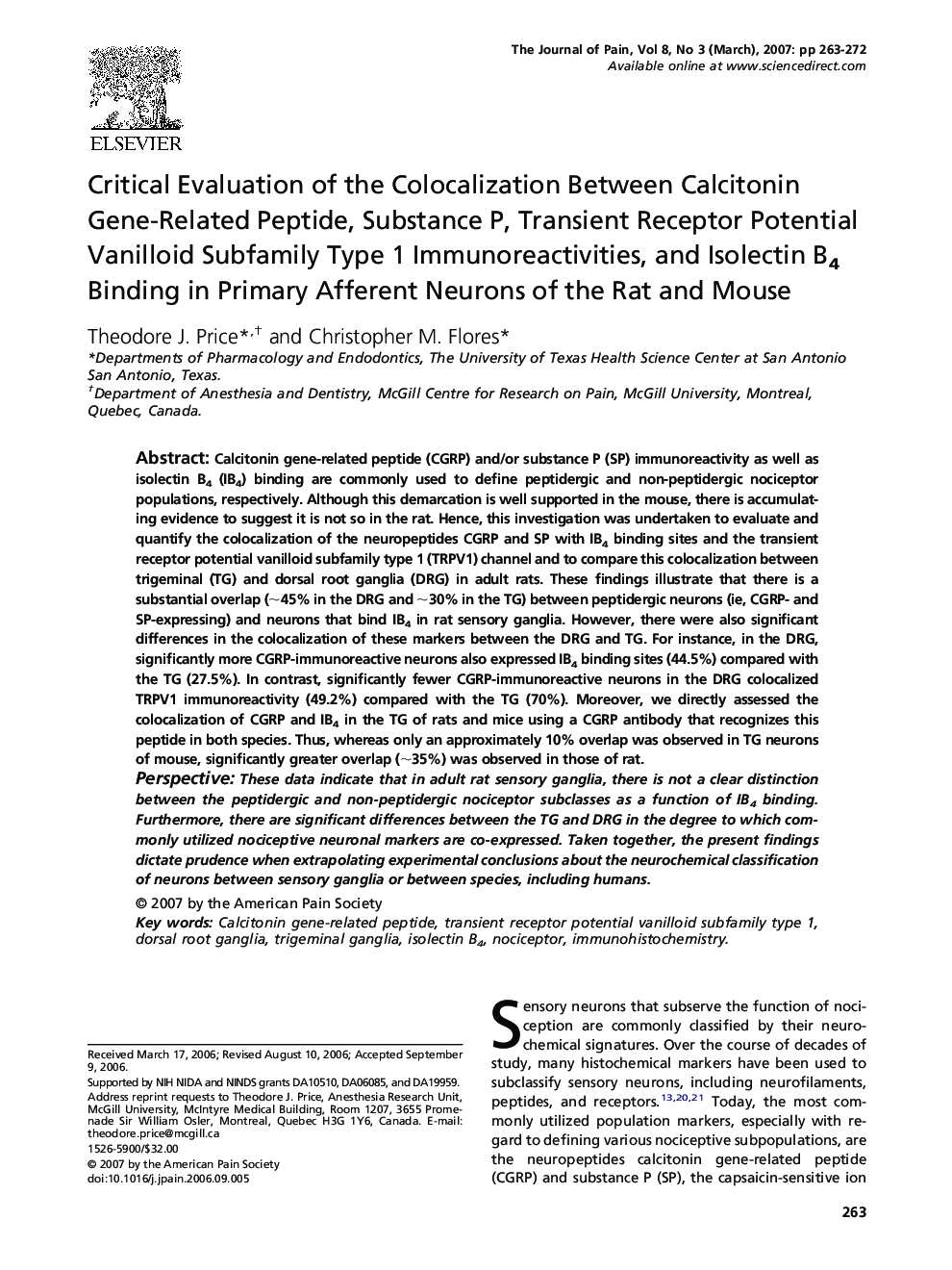| کد مقاله | کد نشریه | سال انتشار | مقاله انگلیسی | نسخه تمام متن |
|---|---|---|---|---|
| 2735258 | 1566844 | 2007 | 10 صفحه PDF | دانلود رایگان |

Calcitonin gene-related peptide (CGRP) and/or substance P (SP) immunoreactivity as well as isolectin B4 (IB4) binding are commonly used to define peptidergic and non-peptidergic nociceptor populations, respectively. Although this demarcation is well supported in the mouse, there is accumulating evidence to suggest it is not so in the rat. Hence, this investigation was undertaken to evaluate and quantify the colocalization of the neuropeptides CGRP and SP with IB4 binding sites and the transient receptor potential vanilloid subfamily type 1 (TRPV1) channel and to compare this colocalization between trigeminal (TG) and dorsal root ganglia (DRG) in adult rats. These findings illustrate that there is a substantial overlap (∼45% in the DRG and ∼30% in the TG) between peptidergic neurons (ie, CGRP- and SP-expressing) and neurons that bind IB4 in rat sensory ganglia. However, there were also significant differences in the colocalization of these markers between the DRG and TG. For instance, in the DRG, significantly more CGRP-immunoreactive neurons also expressed IB4 binding sites (44.5%) compared with the TG (27.5%). In contrast, significantly fewer CGRP-immunoreactive neurons in the DRG colocalized TRPV1 immunoreactivity (49.2%) compared with the TG (70%). Moreover, we directly assessed the colocalization of CGRP and IB4 in the TG of rats and mice using a CGRP antibody that recognizes this peptide in both species. Thus, whereas only an approximately 10% overlap was observed in TG neurons of mouse, significantly greater overlap (∼35%) was observed in those of rat.PerspectiveThese data indicate that in adult rat sensory ganglia, there is not a clear distinction between the peptidergic and non-peptidergic nociceptor subclasses as a function of IB4 binding. Furthermore, there are significant differences between the TG and DRG in the degree to which commonly utilized nociceptive neuronal markers are co-expressed. Taken together, the present findings dictate prudence when extrapolating experimental conclusions about the neurochemical classification of neurons between sensory ganglia or between species, including humans.
Journal: The Journal of Pain - Volume 8, Issue 3, March 2007, Pages 263–272